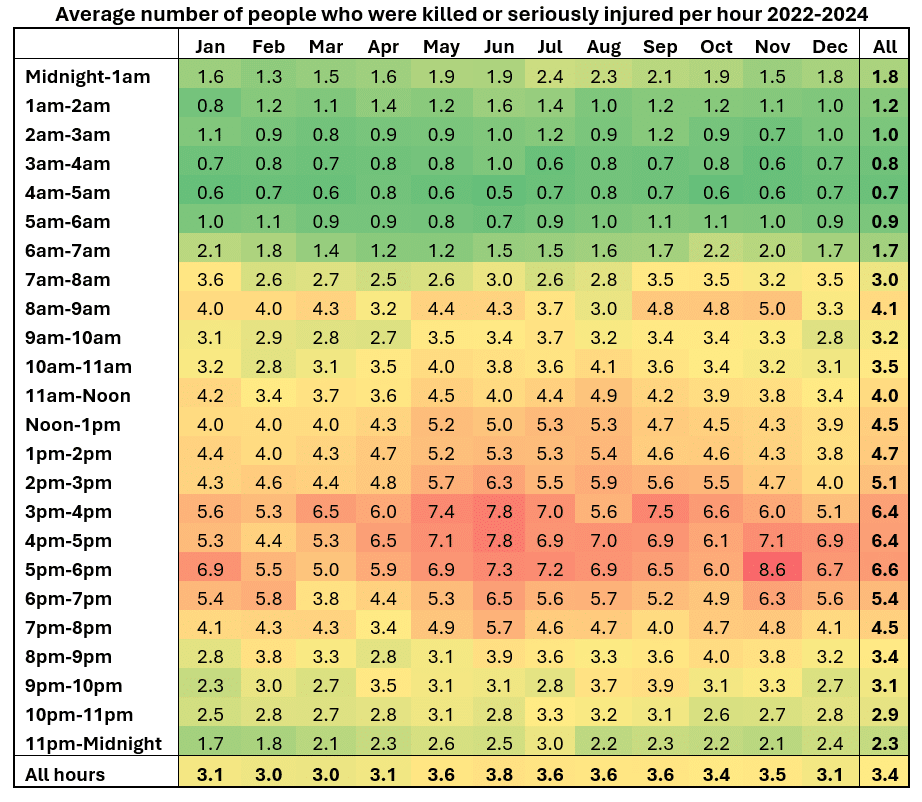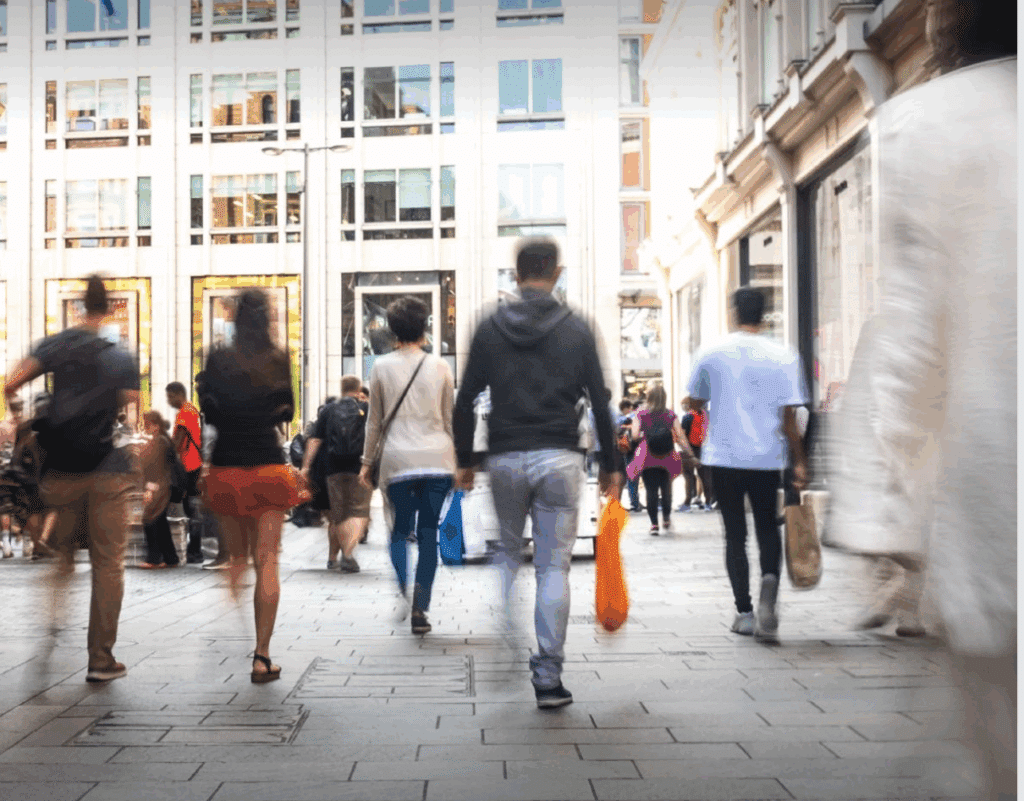On average, more than three people (3.4) are killed or seriously injured every hour on Britain’s roads. However, as the graph below shows, these casualties are far from evenly spread throughout the day. Between midnight and 7am, there is an average of less than 2 such casualties an hour. On the other hand, between 8am and 9am, there is an average of 4.1 such casualties an hour.
But the numbers are higher still from noon right through until 8pm: the afternoon/evening peak is both longer and higher, reaching an average of 6.6 an hour between 5pm and 6pm.

There’s not just variation by time-of-day, of course, but also by time of year, as the ‘heat map’ below shows. In August, for example, the peaks aren’t quite so pronounced while, on the average November day, 8.6 people are killed or seriously injured between 5pm and 6pm.

Much of the variation can be explained by travel patterns: the times of day that we travel to and from school, work and social activities, for example, and the times of year when we take a break from our usual daily routines.
But that elevated number of people who are killed or seriously injured between 5pm and 6pm in November highlights another factor that also plays a part in this variation, which actually affects casualty numbers throughout the year. And that is our routine of putting our clocks back from British Summer Time to Greenwich Mean Time at the end of October.
This change means that numerous journeys in the early evening which would have been in daylight are in the dark instead, increasing the number of casualties. Given we can’t affect how many hours of daylight we have, of course, the reverse occurs in the morning: some journeys which would have been in the dark are in daylight instead, decreasing the number of casualties. However, this decrease is less evident because, regardless of daylight, the number of casualties in the afternoon and evening is so much higher than the number in the morning.
This highlights that it’s not ‘zero sum’: more daylight at the time of day when casualties are at their peak would be desirable – it would literally shed daylight on more of the crashes that do occur, so would be expected to reduce the overall number of casualties.
Moving an hour of daylight from morning to afternoon/evening would therefore be desirable from a road safety perspective: the decrease in casualties in the afternoon and evening would be expected to more than offset an increase in casualties in the morning, not just in November but across the year as a whole.
Churchill made such a change during World War II, recognising other benefits of using daylight hours more effectively. Our crude calculations suggest that adopting ‘Churchill Time’ (GMT+1 in winter, GMT+2 in summer) – as Alex Mayer MP is campaigning for – would prevent something of the order of 40 people being killed and well over 100 people being seriously injured every year. What’s not to like about that?!
